Categories: Featured Articles » Novice electricians
Number of views: 10547
Comments on the article: 0
Application of Inductors
If you think carefully, then all kinds of applications for such a seemingly simple thing as an inductor simply can not be counted. In one article, we recall only a few of them. Meanwhile, human ingenuity and talent do not tire of creatively expressing themselves, inventing and developing more and more new devices and mechanisms based on inductor.
It would seem that here you can build? A simple coil of wire, it can be a core of a certain shape, and the current passing through the wire in a constant, variable or pulsed form. And meanwhile, without inductors all modern electrical engineering simply could not exist. Let's take a closer look.
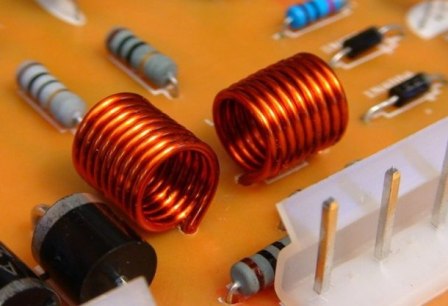
Lifting electromagnet
Elevator washers have been used worldwide for many years to load ferromagnetic waste. By applying an electric power of 18 kW to the working winding, it is possible to hold and immerse more than 2 tons of iron at a time, while the tear-off force developed at a given power exceeds 25 tons.

An electromagnet with a diameter of about 1.5 meters simply clings to the crane hook, is powered, as a rule, by three-phase alternating voltage, and it is possible to quickly load ferromagnetic materials or any iron products. Sectioned windings of several inductors receive current by magnetizing a core made of a special alloy, and it in turn attracts, say, scrap metal that needs to be loaded into cars.
Electromagnetic relay
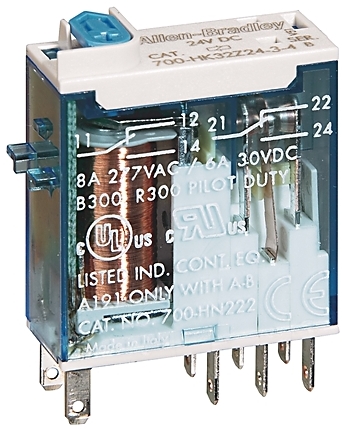
What if you needed to periodically turn on and off the power of some electrical circuit, as if you were pushing a button on a mechanical switch, while putting a semiconductor key is not advisable, and a mechanical switch or toggle switch is not convenient and not aesthetically pleasing?
Suppose you just need to touch the sensor with your finger, and the result should be the process of connecting a powerful load, such as a lamp or motor, to (or disconnecting from) the network. Come to the rescue electromagnetic relays. Thanks to the relay, you can refuse from the huge buttons of the switches; instead, now you can simply touch the micro buttons to which the electronic circuit will react, the function of which is to supply power to the relay coil or remove power from it. The relay coil is the coil of an electromagnet (again, an inductor), which attracts a spring-loaded contact acting as a mechanical switch.
Transformer
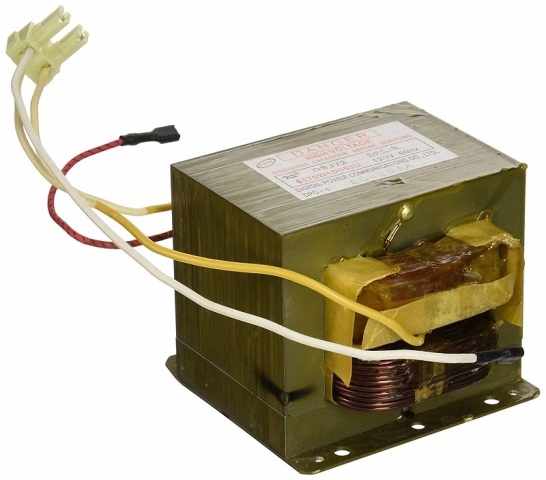
To convert an alternating voltage and current of one magnitude into an alternating voltage and current of another magnitude, use transformers. The primary and secondary windings of a transformer mounted on a ferromagnetic core are inductors.
The primary winding, when an alternating current passes through its wire, creates an alternating magnetic flux in the core volume, which penetrates the turns of the secondary winding, and induces an EMF in it, and creates a voltage of the secondary winding. Transformers increase the voltage of power plants and supply them to power lines, and then lower the voltage from power lines, and supply it to our homes.
There would be no transformers (inductors as primary and secondary windings) - there would be no transmission or distribution of electricity. Not to mention laboratory autotransformers, welding transformers, ferrite transformers in switching power supplies, and of course there would be no talk about any ignition coils in cars, but ignition coils are also special, but transformers, that is, inductors again.
Throttle
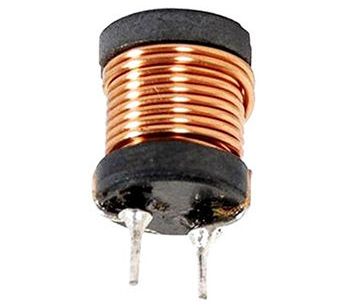
To convert electricity in switching power supplies, special inductors are used - inductors. The function of such a coil is to first accumulate energy in the form of a magnetic field in the core, store it there, then give it to the load. If a transformer converts electricity at the same time, then the inductor first receives energy, then it gives off.
The process of converting electricity at the inductor is divided in time. Nevertheless, here you have again the use of an inductor, its main property. The current pulse is fed to the inductor winding, the inductor stores energy in a magnetic field. Then, the current pulse no longer acts, but a load is connected to the inductor, and the inductor current rushes through the load, but at a different voltage, depending on the time characteristics of the converter control circuit. So the inductor all the time, for example, in energy-saving lamps, works in conjunction with semiconductor switches.
Induction furnaces and induction cookers
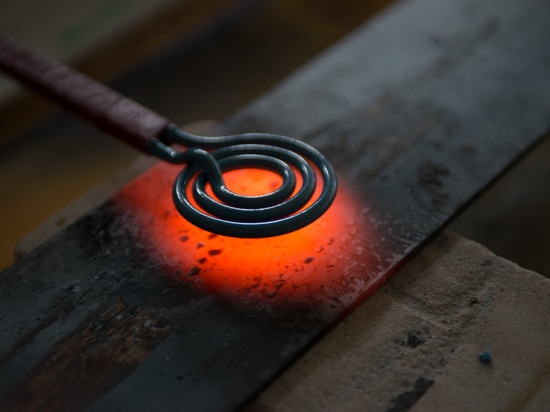
An inductor is a core coil. But what if, as a core, inside a coil, in its field of action, some kind of preform is introduced from ferromagnetic material that needs to be heated by eddy currents? This is how induction furnaces work and induction cookers. An induction heater coil acts as an inductor for a ferromagnetic billet, inducing high-frequency eddy currents in it, leading to heating of the billet until melting.
The induction cooker works in a similar way. The bottom of the cookware is heated by an eddy current, like the core of an inductor, the winding of which is hidden inside the panel of an induction cooker. By the way, induction coils are also used in power supply circuits of induction cookers - in the role of pulse transformers and chokes.
RFI filter
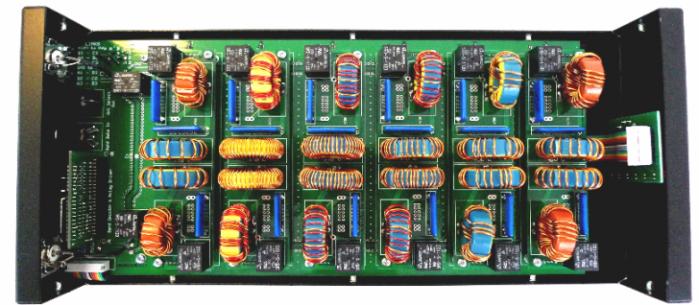
The inductor has the property of preventing the current from changing, it exhibits a kind of electromagnetic inertia, causing the current to seep through itself, because while the current builds up through the coil, the magnetic field created by it cannot change instantly, the change takes time, the inductor seems to slow down magnetic field current change in its own wire.
This property - to prevent current changes - is used in inductive RFI filters. For direct current, the coil is not a resistance, unless the resistance of its wire acts as an active resistance, but for an alternating, but high-frequency current (such as switching noise), the coil will become an obstacle. So filters based on inductors protect networks and circuits from interference.
As part of an oscillatory circuit
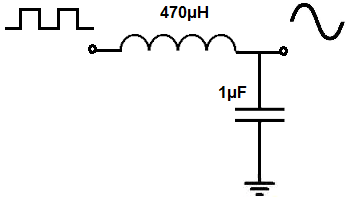
An oscillating circuit is a coil, in particular an inductor (with a core) connected to a capacitor. The oscillating circuit as such usually serves as an oscillating system. It has its own resonant frequency, and therefore can act as a master link for receiving or receiving oscillations of a certain frequency, for example, in radio communications.
By the way, induction heaters often have an inductor connected in parallel with a capacitor, in such conditions the inductor coil is also an integral part of the oscillatory circuit. In addition, the resonant circuit itself can act as a filter - to pass and amplify currents of frequencies close to its own resonant frequency, and suppress frequencies far from it. In radio receivers, ferrite antennas are also part of a tunable oscillatory circuit.
Rotors and stators of engines and generators
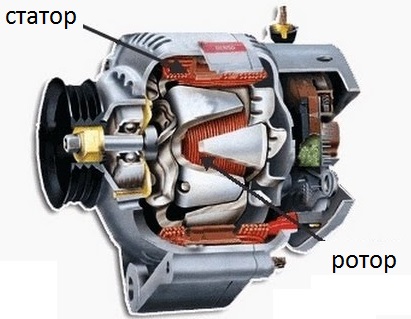
In engines and generators, the stator and rotor are modified inductors. Rotor car generator with field winding and pole pieces - why not an inductor?
The stator of the same generator has a three-phase winding - this is a kind of modification of the inductor. Even an induction motor - even that one has a stator winding, which can also be called an inductor. Moreover, the inductances of these stator coils are taken into account as such when selecting working capacitors, for example, when a three-phase motor must be adapted to power from a single-phase circuit.
Displacement and position sensors

Inductive displacement and position sensors are inductors with modified cores. Part of the core of the coil in the form of a plate, moving changes the inductance of the coil, and the frequency parameters of the circuit change due to changes in inductance. This fixes the presence of an object in the sensor's field of action. Or, a cylindrical rod-shaped core can move as the object associated with it moves, and information on the position of the object is read in the frequency parameters associated with the variable inductance of the coil whose core is moving.
CRT beam direction

In some monitors with cathode ray tubes, the flow of charged particles is focused and deflected by special coils of the deflecting system. The inductance coils of the deflecting system are mounted on a special shape ferrite core into which the cathode ray tube is inserted. By adjusting the current in the windings, the circuit changes the parameters of the total magnetic field of all the coils of the system, as a result of the beam a certain path is created for hitting a precisely calculated location on the screen.
Solenoid valve, electric lock, retractor relay
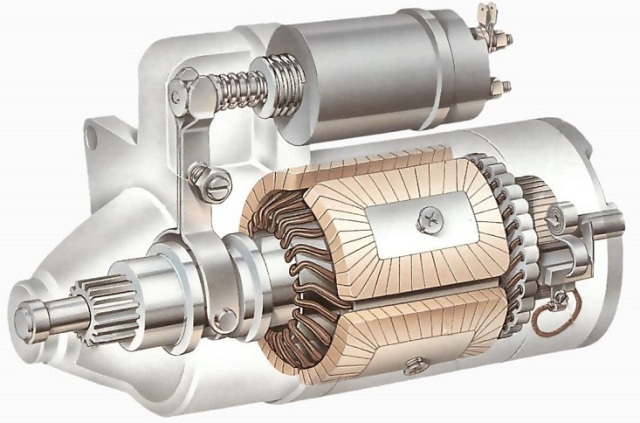
Like a magnet that attracts iron objects, the coil is able to draw in a ferromagnetic core of one form or another. Some electrical locks, solenoid valves, and, as an example, the retractor relay of a car starter, moving the bendix, and holding it for a while in the working position until the engine is started, work approximately according to this principle. A powerful coil first pulls the anchor, then holds it. When the current is turned off, the bendix returns to its place with a spring.
Coils of magnetic plasma confinement
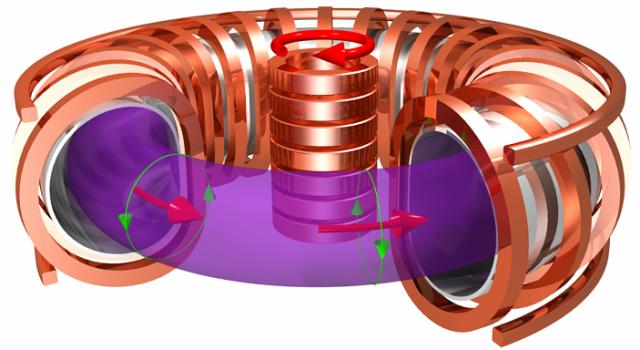
Tokamaki are thermonuclear fusion installations in which plasma is held by creating a magnetic field around it so that the plasma moves only along the lines of force, but cannot break out across them and disrupt the process. Inside a certain configuration of superconducting coils, in the simplest case - strung in a circle around a torus, the plasma could hypothetically circulate almost forever. As you can see, inductors found themselves in tokamaks - toroidal chambers with magnetic coils. The name of the installation speaks for itself.
Tesla Coil

Speaking about inductors, one can not help but recall the legendary Tesla coil (or resonant transformer). In this case, the inductor operates simultaneously as a transformer, and as an oscillating circuit, and as a receiving antenna with an open capacitance. There is no capacitor parallel to the resonating coil, as in an induction heater, but there is a solitary capacity in the form of a toroid.
In addition to the “inductance” parameter, each coil also has a capacitance and its own wave impedance. All these parameters are taken into account when setting up. Tesla transformer. It would seem that just a grounded inductor with a toroid at the top, introduced into its own resonance. But how impressive it looks!
See also at i.electricianexp.com
:
